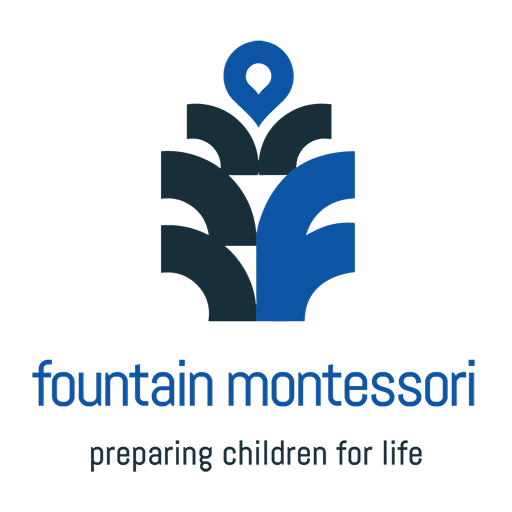It’s important to be educated on the potential causes of injuries such as burns, bites, and broken bones. Read this blog to find out more.
By ParentTV on 16 Feb 2021
Categories: Health
TW: Discussion of injuries to children including serious burns, snake and spider bites and fractures/falls
Sarah Hunstead is a Paediatric Emergency Nurse, so she’s seen a lot of the things our parenting nightmares are made of. She’s probably also seen a lot of parents at our worst, too: stressed, tired and scared for our little people. No matter how calm and composed we think we are, there’s something about seeing our own kids hurting that often sends us off the deep end! We get used to the daily scrapes, sibling scraps and those perpetually bruised toddler shins, but when they really hurt themselves, it’s hard to keep a cool head.
Sometimes, it’s also hard to know what to do, and how seriously to take it. Sarah Hunstead started her business, CPR Kids, to empower parents with practical first-aid knowledge so they can respond effectively when kids do get hurt, and she’s made an excellent bunch of videos for ParentTV to share this info and strategies with us, too. Today, we’re just going to give a little overview of Sarah’s guidance on the three B’s: Burns, bites and broken bones, but make sure you check out her other videos, too! They could help you save your child’s life.
BURNS
Everyone’s either heard of or starred in a family horror story about a child who experienced an awful burn. There’s so many possibilities for how it can happen, and a lot of them are just accidents. Many of us have come close to having one ourselves. Forgetting to turn the handle of a saucepan of boiling water to the back of the stove, looking away from our kids when they’re sitting around a campfire, leaving the hot water running for their bath while we go and fetch pyjamas. The consequences of these tiny actions or inactions can be horrific, so we really need to try and stop burns occurring in the first place, Sarah says. ‘When it comes to burns, prevention is always better than cure.’
Scalds are the most common type of burn for children, such as those from hot water or other hot liquids, so it’s important to teach kids about these risks and be mindful of our own behaviours with our cups of tea and coffee. Resetting your home’s hot water system to 50℃ can also help avoid scalds, Sarah suggests, as many of these hover around the 70℃ mark and can burn kids in a matter of seconds.
Hands on heaters, stovetops and ovens are other common injuries we see, and burns on little kids who were mimicking the grown-ups using a hair straightener in the bathroom without realising the danger. Those plates get to over 180℃ hot, a temperature that can cause catastrophic burns to children.
Sarah Hunstead
So, what do you do if your child does get burnt? ‘Firstly, we need to remove the heat source,’ Sarah says. ‘For instance, if your child has pulled a hot cup of tea down on themselves, you’ll need to remove their clothing, jewellery and their nappy, if they’re wearing one. The only exception is if clothing has melted.’ The next step is cooling the burn, using cold tap water. ‘We don’t use ice, as it’s too cold,’ Sarah says. ‘Instead, you want to use at least twenty minutes of cold, running tap water. This can seem like an eternity if your child is burnt and in pain, but you must do it. If you can cool the burn area, it stops the burning process that can continue even after the heat source has been removed.’
The other parts of the child should be kept warm, and no creams or lotions should be applied. Instead, apply a non-stick bandage or place cling wrap loosely over the burn to protect it while you seek medical attention. If you’re wondering how to know if you need this medical attention, check if the burnt skin is ‘disrupted’, Sarah says. ‘If the skin has come away or is blistered, you need to seek immediate medical help. This can help prevent scarring, infection and related issues, like fluid loss.’ If the burn is extensive, located on the face, neck or chest or you can’t safely access a GP or transport your child to hospital, call an ambulance straight away.
BITES
Australia is famous for the vast quantities of bitey creatures we have on our wide brown land, and that’s not counting our own children. Snakes, spiders, insects and other beasties are abundant in our homes, sheds and back yards, and most of us have a healthy respect for them – and keep a healthy distance from them! But, they sometimes come a bit too close for comfort, or a curious little person gets all up in their grill and they retaliate in the best way they know how. So, how can we tell if a bite is serious? Should we burn the place down if we see a redback spider? Is it EVER fine to just slap a bandaid on a snake bite and hope for the best?
‘In the past, the first aid for a dangerous snake or spider bite was to apply a tourniquet or cut the area that was bitten and suck the poison out,’ Sarah Hunstead says. ‘But we now know the pressure immobilisation technique is more effective.’ When your child’s been bitten, it’s important to keep them calm and still while you administer treatment. If you panic, they will panic. ‘In the pressure immobilisation technique, you wrap the affected limb with a bandage, quite firmly. We don’t want to cut off the blood supply, but we do want to compress the lymph system because the venom travels in the lymph.’
Once the bandage is on, you should be able to slip a finger beneath it, but only just. You then need to immobilise the limb. For instance, if the bite is on the arm, a sling can be used to keep the arm pinned in place. You can see Sarah demonstrate the pressure immobilisation bandaging technique in the video below.
BROKEN BONES
The way they careen around, it’s not surprising that many kids will break a bone at some point in their childhood. This might depend on how active they are, the sports they play and the sort of risks they take, but even the most sensible kid might suddenly attempt a backflip off the monkey bars. So, what do we do if we think our kids might have broken a bone? Well, as Sarah Hunstead points out, it can be really hard to tell if it’s actually a fracture or not. ‘We don’t have x-ray vision, so we don’t always know if it’s a sprain, strain or fracture. We do know that kids are actually more likely to have broken a bone than experienced a strain or sprain. So, if they’re not weight-bearing on an injured limb or using it normally, we can reasonably suspect a broken bone.’
We won’t go into too much detail, but sometimes it’s very clear that a bone is broken. ‘Those instances are a medical emergency, and there’s no need for any heroic first-aid treatment, just call an ambulance immediately and keep your child as calm as possible,’ Sarah says. But, more often, your child might be just a little cautious with an injured limb and reluctant to use it.
In these times, you should immobilise it, ice it and get medical help. ‘It’s important that you stay calm, so they can stay calm,’ Sarah says. ‘By all means, give them some pain relief, because these injuries can be quite painful. Then, you’ll need to immobilise the limb with a sling or splint, and you may be able to use their clothing to do this. Ice it, but don’t place ice directly on the skin, as it’s too cold. Ideally, elevate the limb, then seek medical help.’
Sign up to ParentTV for access to the full range of Sarah Hunstead’s videos, including her instructions for giving CPR to babies and children and her info on kids and poisons, drowning prevention, head injuries and (everyone’s favourite!) – what to do when they put peas up their nose!


